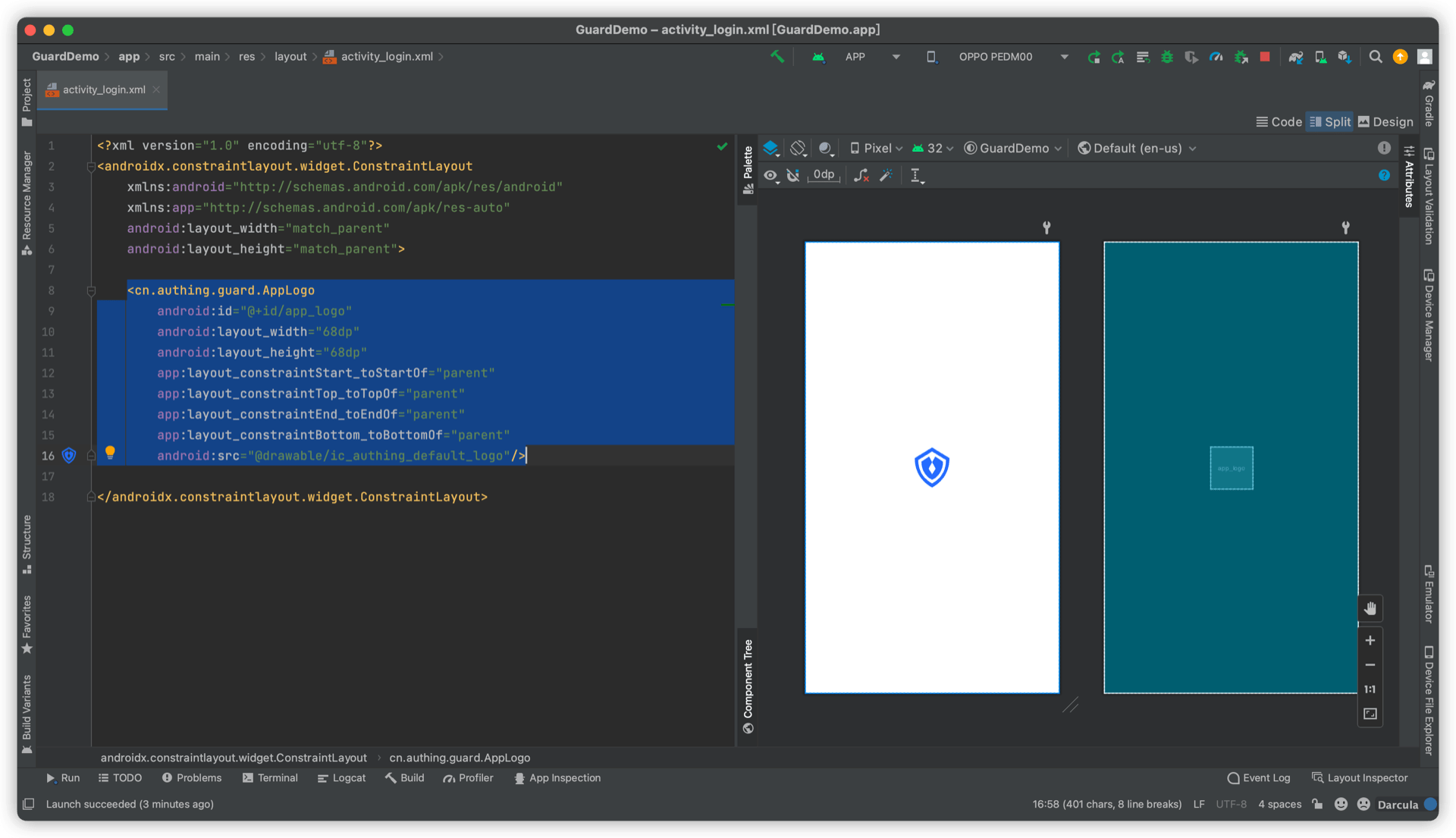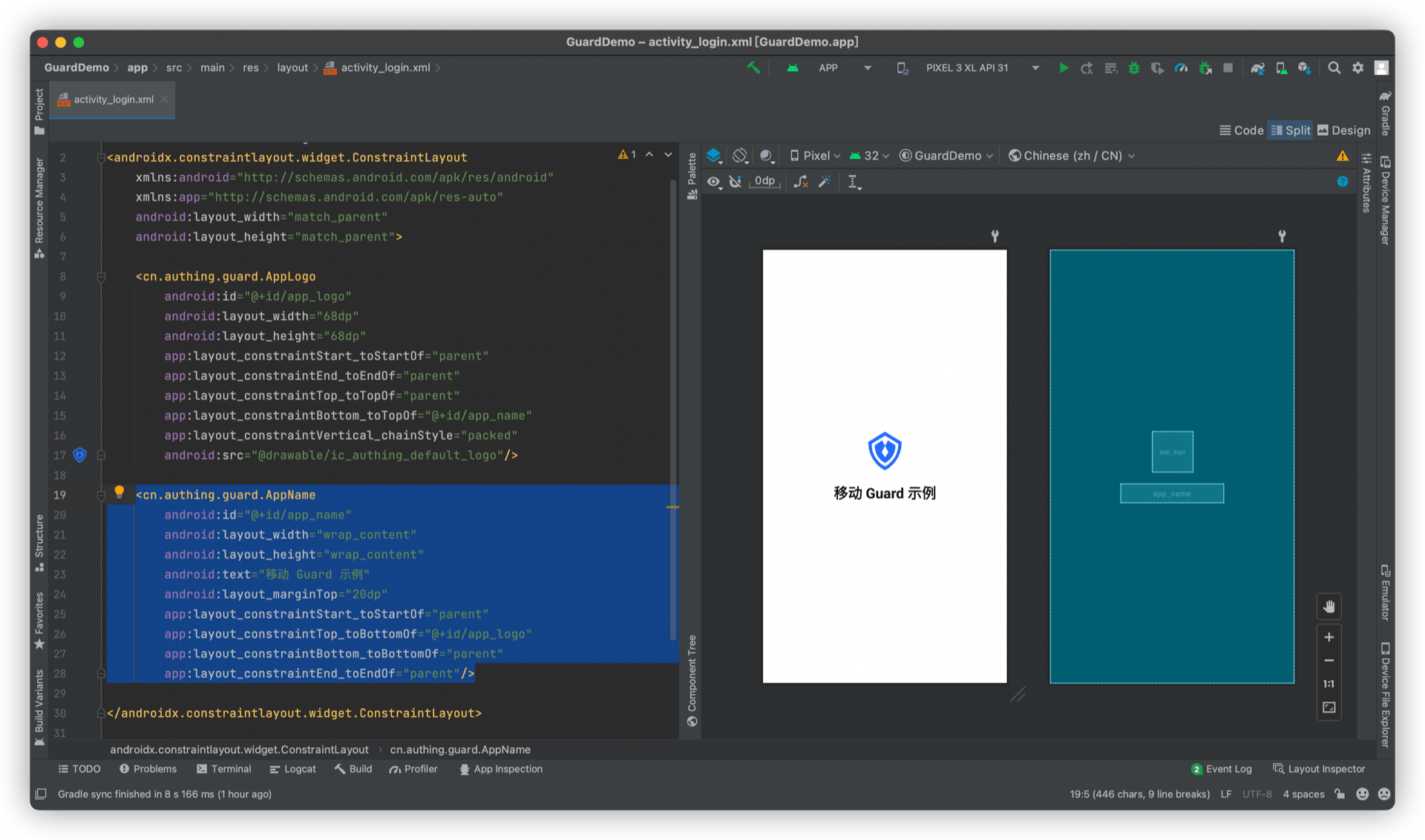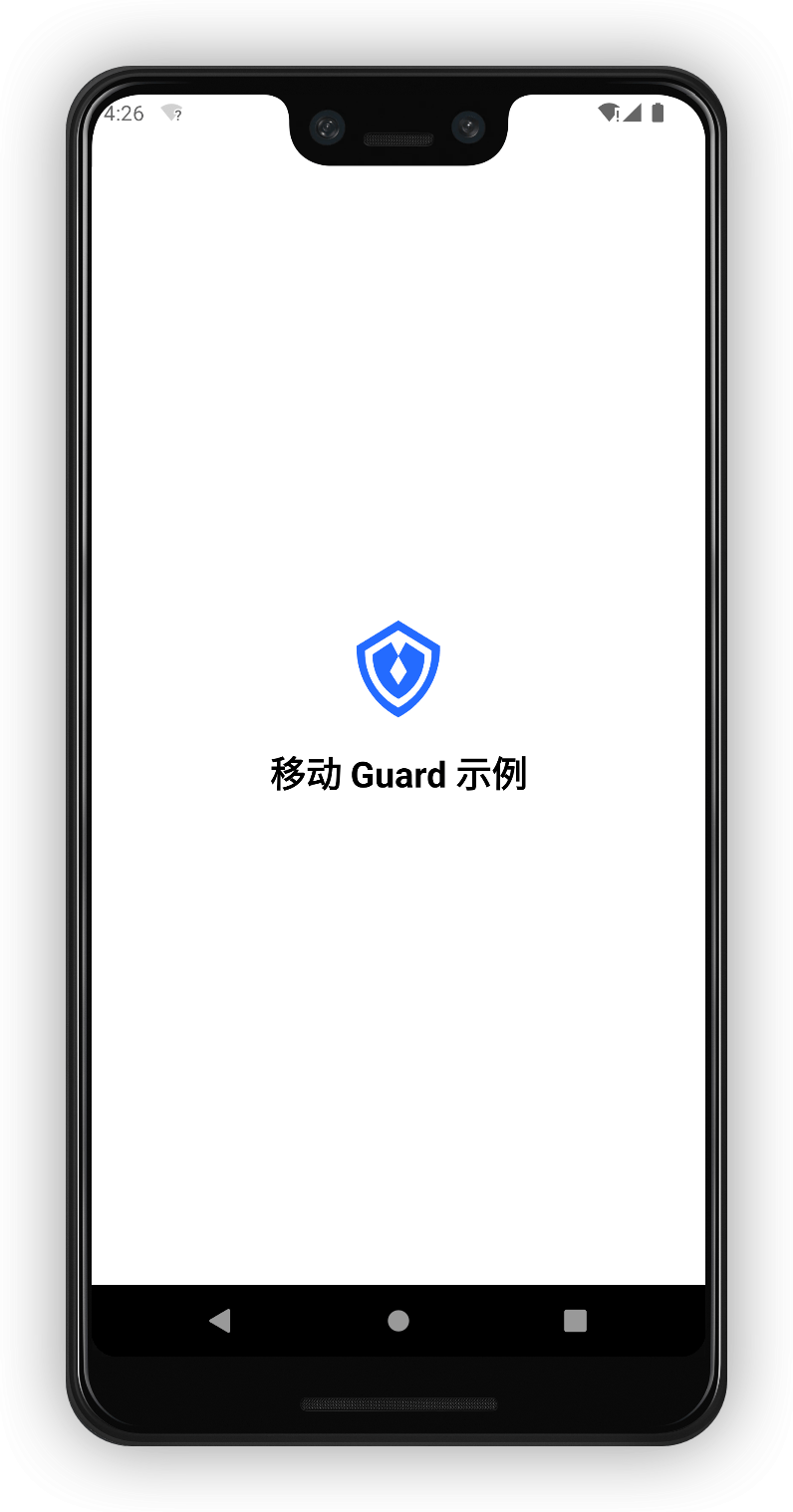¶ 入门示例
更新时间: 2025-11-10 02:59:49
¶ 放置一个 AppLogo

¶ 再放置一个 AppName

¶ 完成

¶ 完整示例代码
<?xml version="1.0" encoding="utf-8"?>
<androidx.constraintlayout.widget.ConstraintLayout
xmlns:android="http://schemas.android.com/apk/res/android"
xmlns:app="http://schemas.android.com/apk/res-auto"
android:layout_width="match_parent"
android:layout_height="match_parent">
<cn.authing.guard.AppLogo
android:id="@+id/app_logo"
android:layout_width="68dp"
android:layout_height="68dp"
app:layout_constraintStart_toStartOf="parent"
app:layout_constraintEnd_toEndOf="parent"
app:layout_constraintTop_toTopOf="parent"
app:layout_constraintBottom_toTopOf="@+id/app_name"
app:layout_constraintVertical_chainStyle="packed"
android:src="@drawable/ic_authing_default_logo"/>
<cn.authing.guard.AppName
android:id="@+id/app_name"
android:layout_width="wrap_content"
android:layout_height="wrap_content"
android:text="移动 Guard 示例"
android:layout_marginTop="20dp"
app:layout_constraintStart_toStartOf="parent"
app:layout_constraintTop_toBottomOf="@+id/app_logo"
app:layout_constraintBottom_toBottomOf="parent"
app:layout_constraintEnd_toEndOf="parent"/>
</androidx.constraintlayout.widget.ConstraintLayout>
此教程展示了 Authing 超组件的力量,如果我们把这个思想拓展到整个认证流程的构建中,将会极大提高开发效率。
接下来,我们看一个稍微复杂一点的例子:如何通过超组件快速实现一个经典的登录界面。